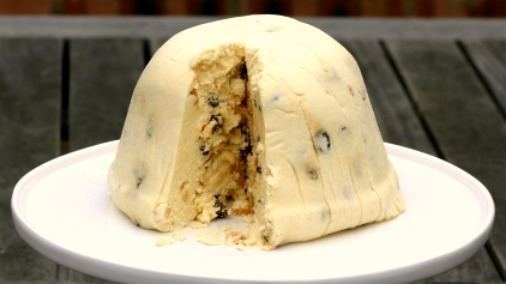 | ||
Similar Kulich, Paska, Succade, Mazurek, Quark | ||
Paskha service in st varvara church in kazan part 2
Paskha, Pascha, Pashka, or Pasha (Russian: Па́сха; [ˈpasxə]; "Easter") is a festive dish made in Eastern Orthodox countries which consists of food that is forbidden during the fast of Great Lent. It is made during Holy Week and then brought to Church on Great Saturday to be blessed after the Paschal Vigil. The name of the dish comes from Pascha, the Eastern Orthodox celebration of Easter.
Contents
Cheese paskha is a traditional Easter dish made from tvorog (farmers' cheese/curd cheese), which is white, symbolizing the purity of Christ, the Paschal Lamb, and the joy of the Resurrection.
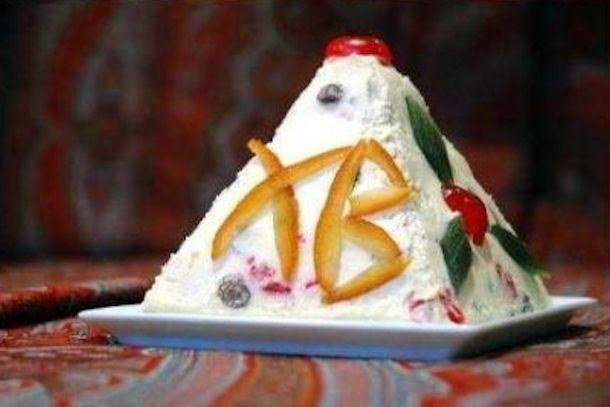
In the Russian Orthodox tradition, pascha is usually molded into the form of a truncated pyramid (a symbol of the Church; this form is also said to represent the Tomb of Christ). Pascha is traditionally made in a wooden mold assembly called пасочница (pasochnitsa) that can be taken apart for cleaning; however, more modern materials, such as plastics, are used nowadays.
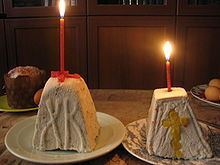
The pascha is decorated with traditional religious symbols, such as the "Chi Ro" motif, a three-bar cross, and the letters X and B (Cyrillic letters which stands for Христосъ Воскресe. This is the Slavonic form of the traditional Paschal greeting: "Christ is Risen!"). All of these religious decorations symbolize Christ's Passion and Resurrection.
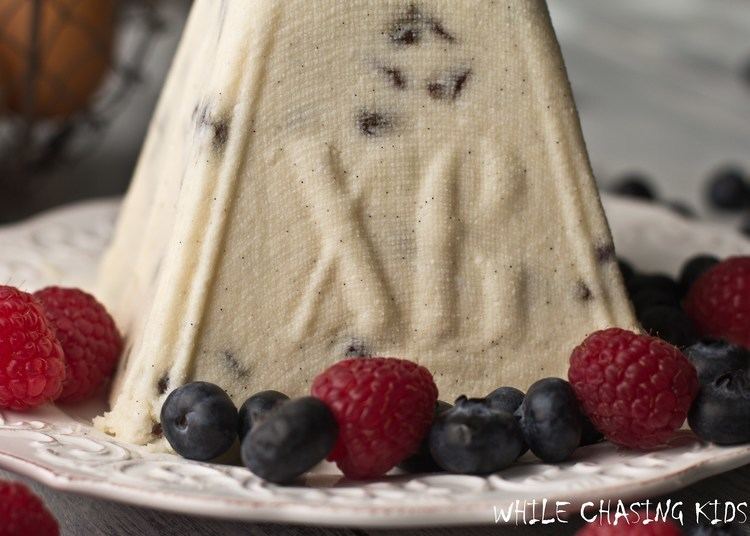
Preparation
In addition to the main ingredient (tvorog), additional ingredients, such as butter, eggs, heavy or sour cream, raisin, almonds, vanilla, spices, and candied fruits can be used.
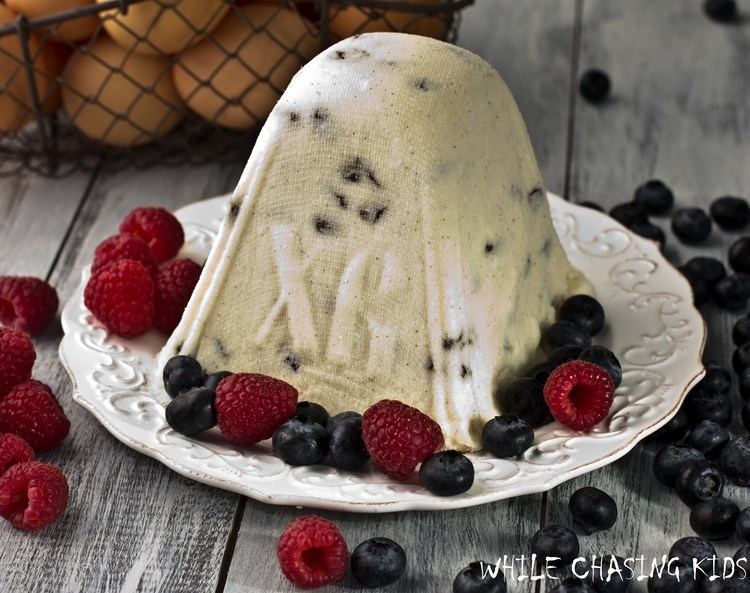
The paskha can either be cooked or uncooked (raw). Cooked paskha is made in the form of an egg custard, to which the remaining ingredients are folded in. An uncooked paskha is made simply of the raw curd and the other ingredients mixed at room temperature. Since uncooked curd cannot be conserved for a long period of time, these paskhas are typically made smaller.
The tvorog is first pressed in order to eliminate the maximum amount of liquid possible, then put twice through a sieve to make a homogenous mass. If the paskha is cooked, this mass is then heated. The pan containing the mixture is then placed in a container of cold water and progressively cooled, then placed in the paskhachnitza mould with a layer of cheese cloth protecting the mould. The mould is cooled for twelve hours in a cold, but not freezing place (typically in a cellar or refrigerator). Finally, the paskha is turned out of the mould, the cheesecloth removed, and put on a dish. It may then be decorated with candied fruits, nuts, or flowers.

The paskha (or at least a portion of it) will be placed in an Easter basket together with other festal foods, and taken to church to be blessed. Paskha is traditionally accompanied by a rich Easter bread called Kulich.
Other uses
An 18th-century church in St. Petersburg is known as "Kulich and Paskha", because the rotunda of the church resembles kulich, while the adjacent belfry has a pyramidal form reminiscent of paskha (photographs here).
Cheese paskha
Cheese paskha is an Eastern European and Russian side dish of cheese and is served accompanying Ukrainian paska and Russian kulich (the same dish by the respective Russian and Ukrainian language names). It is formed in a mold, traditionally in the shape of a truncated pyramid. It is made with farmer's cheese (quark) and is served as an accompaniment to paska (bread) / kulich. In Russia the type of cheese used is called tworog (Polish twaróg). A curd cheese, it is used as a spread or dip for the bread kulich/ paska dish. In contemporary times, cheese paska is not always formed in a mold and is sometimes served in a mound on a plate.
